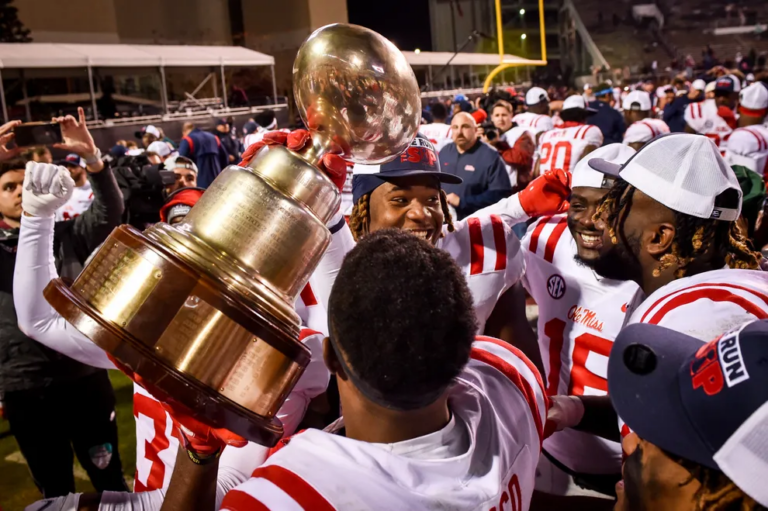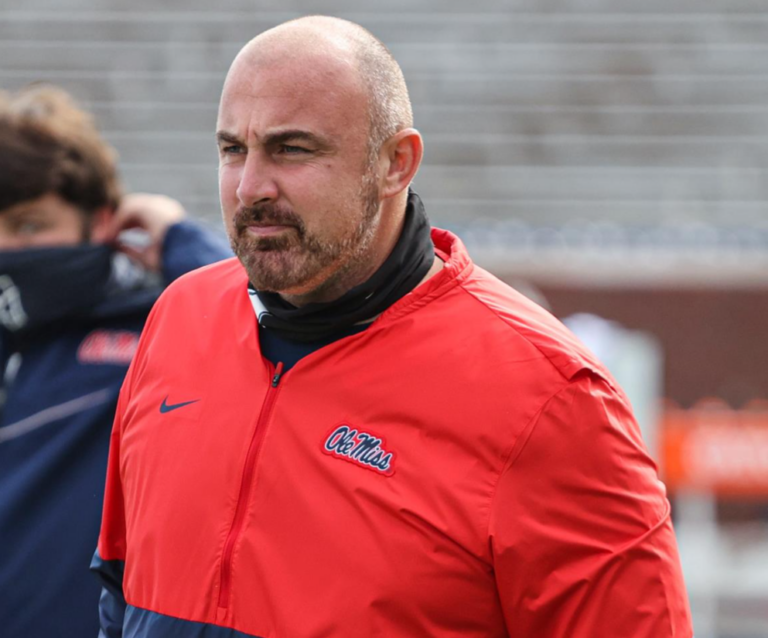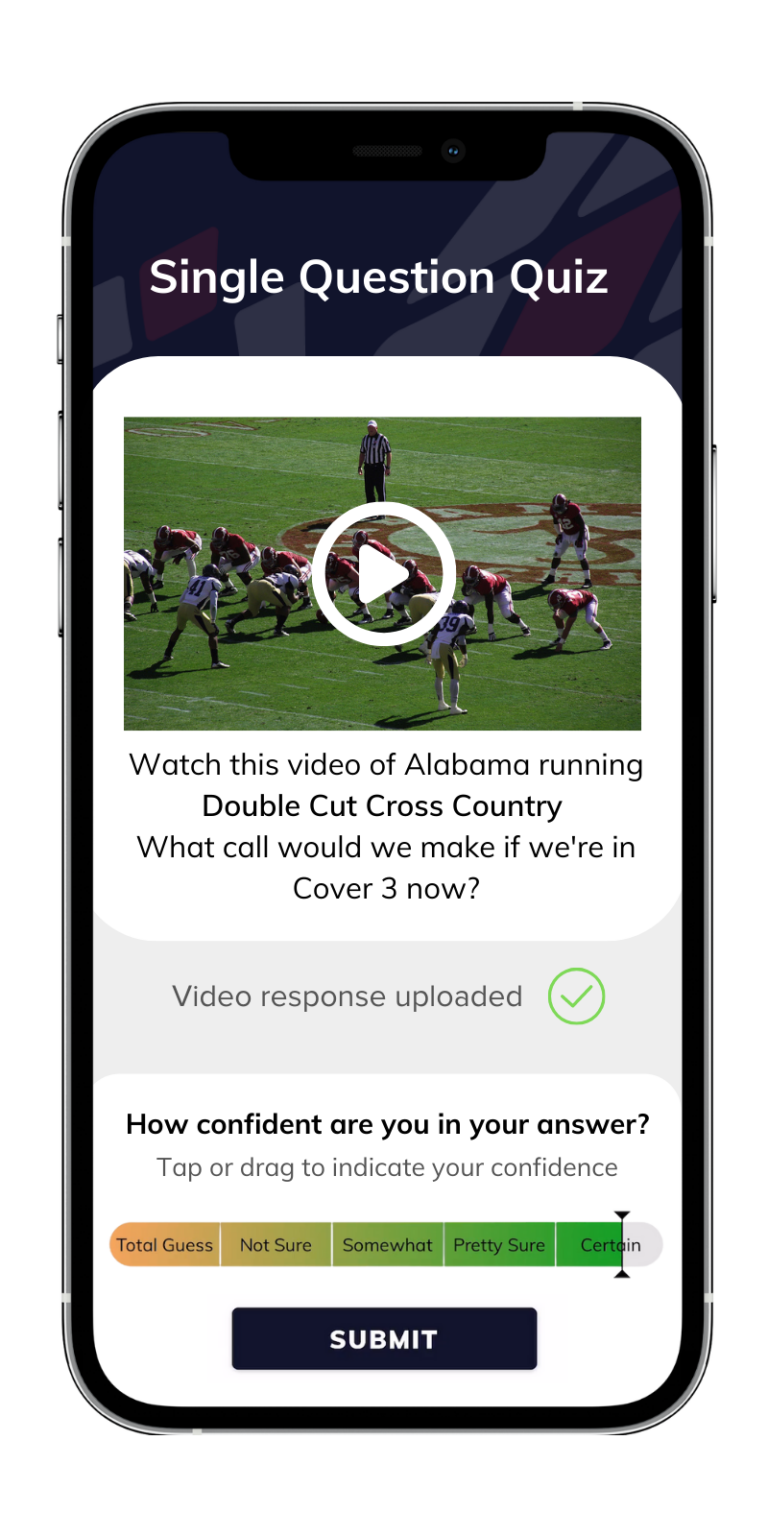In 2021, Ole Miss Football executed the most impressive SEC turnaround in a decade. The press declared that “in the 10 years since the SEC expanded to 14 teams, there hasn’t been a team that fixed its defense more year-over-year than Ole Miss just did.”
Going into the season, the Ole Miss defense had lots of room to improve. The 2020 season delivered a mixed 5-5 record. The Rebels’ offense was ranked No. 1, but the defense was the team’s Achilles’ Heel.

In 2021, Ole Miss Football executed the most impressive SEC turnaround in a decade. The press declared that “in the 10 years since the SEC expanded to 14 teams, there hasn’t been a team that fixed its defense more year-over-year than Ole Miss just did.”
Going into the season, the Ole Miss defense had lots of room to improve. The 2020 season delivered a mixed 5-5 record. The Rebels’ offense was ranked No. 1, but the defense was the team’s Achilles’ Heel.

Sports Illustrated didn’t mince words: “The defense was, to be polite, a disaster, ranking near the bottom of the country in nearly every major statistical category.”
But in 2021, Ole Miss returned with a defensive fire to match its offensive prowess. Sports Illustrated announced that “the defense stole the show for the Rebels.” The team completed the season with a 10-3 record, ranked 11th in the nation.
The most impressive part? The Ole Miss defensive transformation took place with the same cast of players on the field. The team’s composition didn’t change. They just got better, faster.
The secret was great coaching and a smart approach to training. Defensive co-coordinator Chris Partridge used Learn to Win to make his team’s learning fast, focused, and effective.
Coach Partridge's Game Plan to Get Better, Faster
“Football is so fast and complicated nowadays. It’s very different now than it was even three years ago. You need to gain every advantage you can when it comes to teaching your players.”
Chris Partridge is known as one of the nation’s top recruiters. He has been co-defensive coordinator and safeties coach at Ole Miss for two years.
Before Ole Miss, Partridge spent four seasons with the University of Michigan, where he revolutionized their recruiting and served as the special teams coordinator.

At Michigan and Ole Miss, Partridge sought to implement cutting-edge approaches to training. “If you’re just planning on teaching your players in meetings and on the practice field, you won’t get ahead,” he says.
Here’s how Partridge and his team used Learn to Win to help Ole Miss football get better faster and transform the team’s defense from liability to strength.
“Football is so fast and complicated nowadays. It’s very different now than it was even three years ago. You need to gain every advantage you can when it comes to teaching your players.”
Chris Partridge is known as one of the nation’s top recruiters. He has been co-defensive coordinator and safeties coach at Ole Miss for two years.

Before Ole Miss, Partridge spent four seasons with the University of Michigan, where he revolutionized their recruiting and served as the special teams coordinator.
At Michigan and Ole Miss, Partridge sought to implement cutting-edge approaches to training. “If you’re just planning on teaching your players in meetings and on the practice field, you won’t get ahead,” he says.
Here’s how Partridge and his team used Learn to Win to help Ole Miss football get better faster and transform the team’s defense from liability to strength.
Spot knowledge gaps early
The Ole Miss playbook changes constantly.
Before Learn to Win, coaches would type play corrections and adjustments into a Word document, then print it out and manually add drawings. Then they’d scan the packet and mail it out to players as a PDF.
The problem: Partridge had no way of knowing if players had read these emails, much less understood them. The only ‘assessments’ came when players were on the field, where a knowledge gap is glaringly evident for an entire audience to see.
Partridge and his staff replaced PDFs with Learn to Win micro-modules. These included quick quizzes that involved screenshots, drawings, and recordings of plays.
The data from Learn to Win helped Partridge see what his players understood – and what they didn’t. Coaches were able to focus on the leading indicator of learning rather than the lagging indicator of in-game performance.
“The key is to see the mindset of your players before the game,” says Partridge. “If a guy is really struggling with a concept, we can fix it early.”
Prioritize one knowledge gap at a time
Here’s one way NOT to unlock rapid improvement: Drop a 3-ring binder full of plays on your players and say, “learn this.” It’s not hard to imagine eyes glazing over.
Coach Partridge and his team took a different approach. Each day, they used data from the previous night’s quiz to decide what topic to focus the day’s meeting on.
“My position group coaches look at the quiz data, and say ‘hey, guys are struggling with this concept’ so that’s what we hit in the meeting,” says Coach Partridge. “Based on the data, we either focus on that concept, change how we coordinate it, or, if everyone is struggling with it, we sometimes just throw it out”
Partridge constantly repeats this process. He quizzes his players multiple times per week – sometimes even daily– all season long.
These repeated short-term lessons reinforce long-term learning. Players feel more confident they can effectively complete small objectives in a week. Meanwhile, coaches are able to continuously cycle learning objectives and topics with each new quiz.
“The beauty of Learn to Win is that you’re seeing the way your players are thinking, so you can use that insight to correct the way they operate.
I can’t count the number of times that I’ve looked at answers from a quiz and realized, ‘These guys aren’t seeing that adjustment the right way.’ So we get together and fix it – before the game.”
Train young players the way they learn best
Today’s players are different: Attention spans are shorter than ever, the mobile phone is the primary learning device, and today’s players are more technologically sophisticated than previous generations.
Coach Partridge sets his players’ expectations that every night, they’ll get a notification on their phones about a short quiz on Learn to Win.
Players can take the quiz directly on their phones – there’s no need to log onto their computers and download email attachments. “The best part is that players don’t complain about it, because it’s easy,” Coach Partridge says. “They’re already on their phones all the time anyway.”
“There’s buy-in among our players because a lot of NFL teams are using this now. So we tell them, ‘You’re gonna have to use this in the NFL. This is what it means to have a pro mindset.’”
Quickly and easily spin up a new lesson
Time is scarce for football coaches. They never feel like they have enough time to prepare before the next game.
Therefore, it can feel daunting for coaches to have to learn how to use a new training tool. But Coach Partridge has found that Learn to Win saved him time, which gave him a competitive advantage.
Learn to Win makes it easy for anyone to create a quick lesson, regardless of their level of tech expertise. “I’m not a technologically savvy guy,” Coach Partridge self-admits. “But Learn to Win is not hard to use. It has helped us tremendously. I will always use it.”
Here’s an example of how easy it is to create fresh training: One night, Coach Partridge told his staff, “Hey, send the players a 1-question quiz tonight. Send them a video of Alabama running ‘Double Cut Cross Country.’ And then ask, ‘What call would we make if we’re in Cover 3 now?’”

The coaching staff took three minutes to pick a clip and make a quick quiz. The players took three minutes to take the quiz. The data from those six total minutes? Invaluable.
“You’re putting a play that Alabama runs in their mind,” Partridge says. “They just got better as players, and we got better as a program by doing that.”
Get new recruits up to speed quickly
College football teams are always onboarding new faces. Each academic year brings with it new freshmen, transfers, and newly hired staff members.
This is where Coach Partridge saw the most obvious advantages of Learn to Win. He emphasizes “it’s the BEST for freshmen and guys that come in – we get transfers up to speed in no time.”
New players and coaches can ramp up at their own pace on Learn to Win.
For example, last year, Coach Partridge saw that a starting freshman had answered several questions incorrectly on Friday night. Because he had that real-time data, Coach Partridge clarified those concepts the next day.
The results were immediate. When the team reached a crucial fourth and one on game day, that player instinctively went to the right place and tackled for a loss.
“I don’t think he would have gotten that without Learn to Win,” Partridge says.
Protect proprietary playbook content
An active transfer pool and rotating staff means protecting team strategies can be challenging. Once a PDF document gets emailed out, you lose control if anyone else can see and share it – including your competitors.
For Coach Partridge, Learn to Win helped him ensure that his playbook remained secure. If a player transferred off the team, he knew that he could lock them out of Learn to Win, and they wouldn’t be able to give the playbook he had built to anyone else.
Looking Ahead
As Ole Miss gears up for the 2022 season, Coach Partridge knows that his training will be a major strength of the team.
This fast, focused, and flexible approach lets the Ole Miss coaching staff build quizzes on scouting reports, new play installations, and play adjustments minutes after each practice.
Coaches are empowered by having a platform on which to quickly and easily train their athletes. And the athletes have higher confidence in their learning abilities.
In Coach Partridge’s words, “I think it’s a no-brainer. You’d be crazy not to use Learn to Win.”

